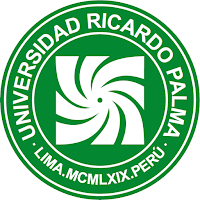Vallejo's maps in Trilce
Vallejo's maps in Trilce Vallejo's maps in Trilce
Article Sidebar
Main Article Content
Margarita del Rosario Angleró
Abstract
A first reading of Trilce causes complete bewilderment, and it is clear that this discomfort is one of the features of its aesthetic meaning. The outline of a poetic «map» of Vallejo could illuminate or guide readers to the sense of disorientation experienced in the reading of his poems. Although Vallejo does not mark a visual map on the page or canvas like other avantgarde poets, in Trilce the map is sketched by words that allude to the geography of an uncertain place: body, house, prison, to name but a few. In this sense, this article outlines a possible mapping of the poems «XIX», «XXXVI», «Trilce», as well as their relationship with the collection of poems España, aparta de mi este cáliz.
Article level metrics
Downloads
Metrics
Article Details

This work is licensed under a Creative Commons Attribution 4.0 International License.
La revista utiliza una licencia Creative Commons para mostrar a los lectores y a los usuarios cómo se pueden utilizar los contenidos publicados.
Los contenidos publicados en la revista están bajo una licencia CC-BY 4.0, la cual permite:
- Compartir, copiar y redistribuir el material en cualquier medio o formato.
- Adaptar, remezclar, transformar y construir a partir del material para cualquier propósito, incluso comercialmente.
Bajo los siguientes términos:
- Atribución. Usted debe dar crédito de manera adecuada, brindar un enlace a la licencia, e indicar si se han realizado cambios. Puede hacerlo en cualquier forma razonable, pero no de forma tal que sugiera que usted o su uso tienen el apoyo de la licenciante.
La información de licencia se muestra e incrusta en las páginas de artículos y en ficheros de texto completo como sigue:
«Este obra está bajo una licencia de Creative Commons Reconocimiento 4.0 Internacional».
Covarrubias, S. de (1943). Tesoro de la lengua castellana o española. S. A. Horta, I. E.
Eliade, M. (1963). Myth and Reality. Waveland Press.
Franco, J. (1976). César Vallejo. The Dialectics of Poetry and Silence. Cambridge University Press.
Moran, D. (2014). Vallejo and González Prada: a Note on Trilce XIX. The Modern Language Review, 109(3), 689-707. https://doi.org/10.5699/modelangrevi.109.3.0689
Vallejo, C. (1991). Trilce (edición de Julio Ortega). Cátedra.
Vallejo, C. (2020). Poemas en prosa; Poemas humanos; España, aparta de mí este cáliz (edición de Julio Vélez). Cátedra.
Yurkievich, S. (2002). Fundadores de la nueva poesía latinoamericana. Edhasa.










